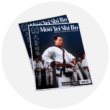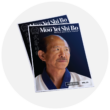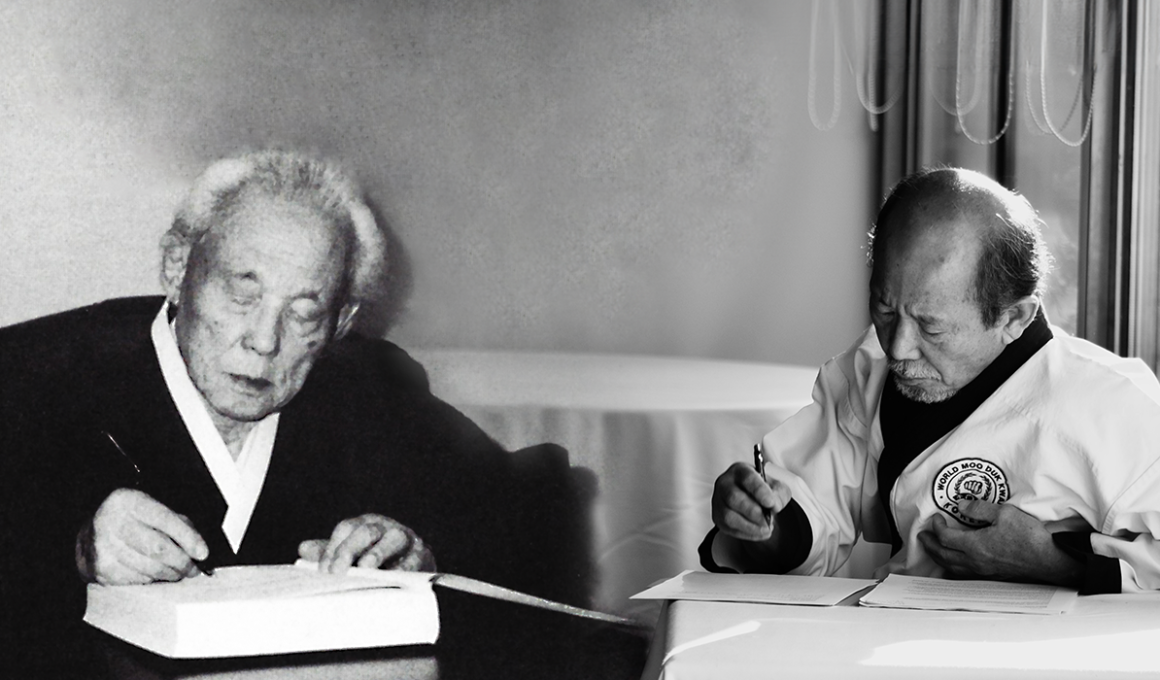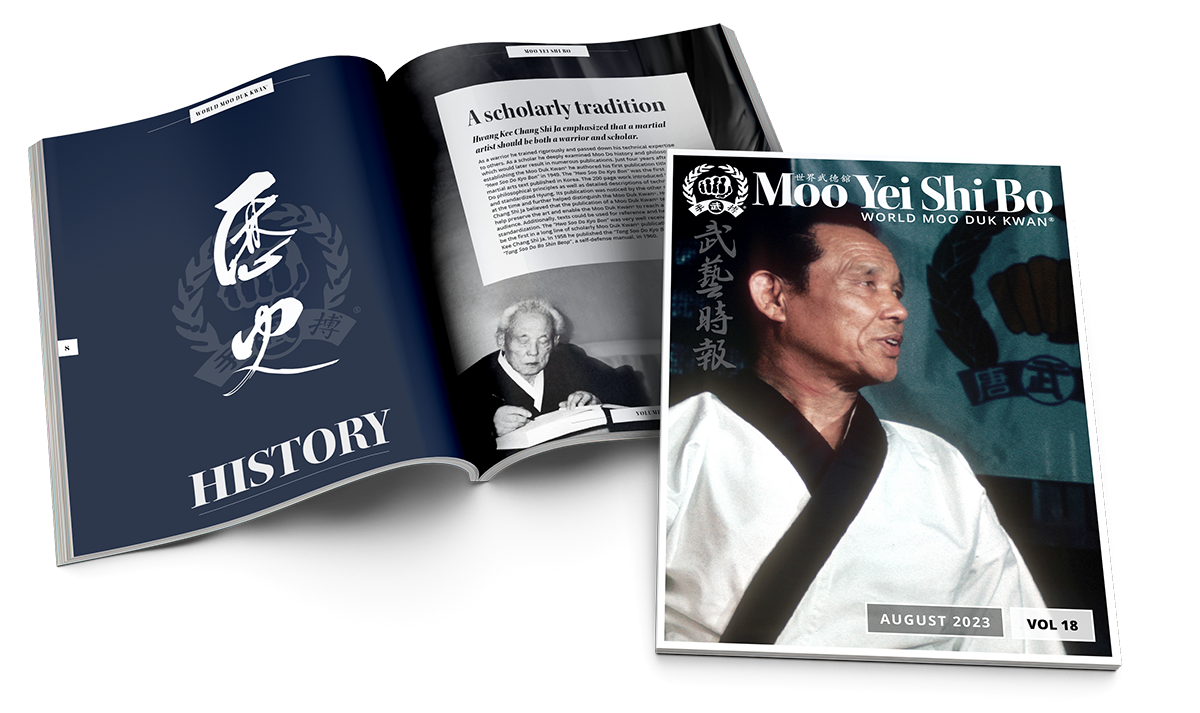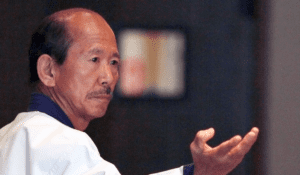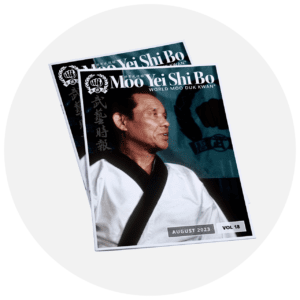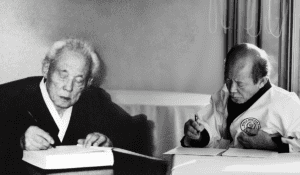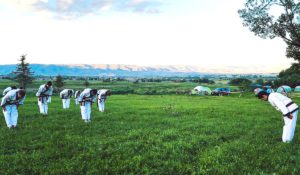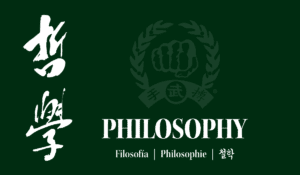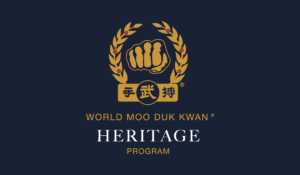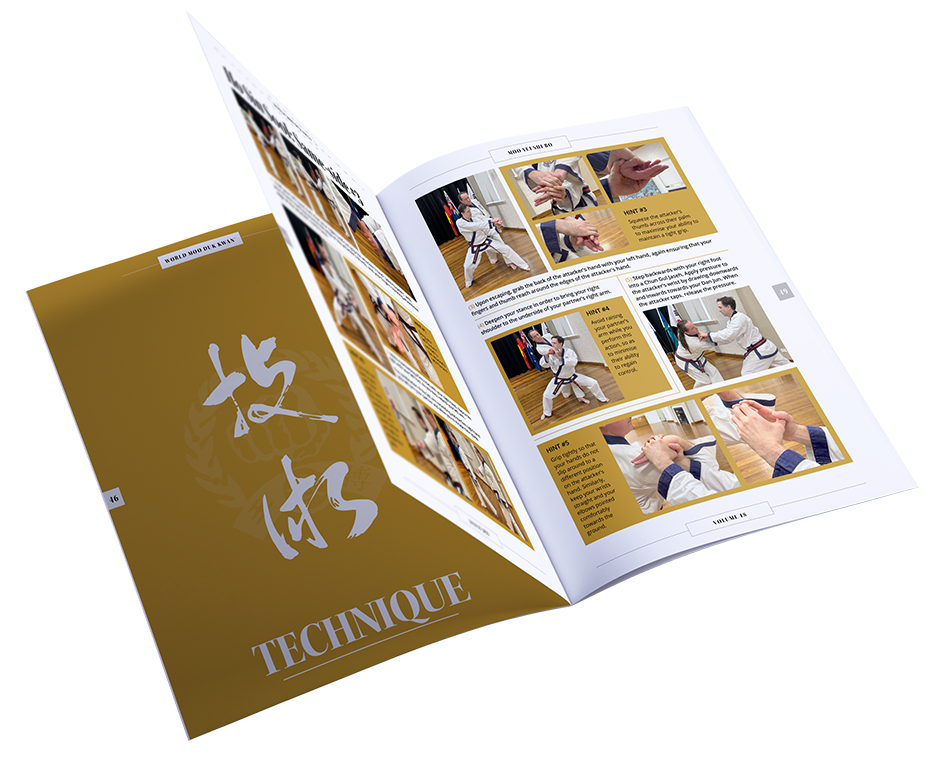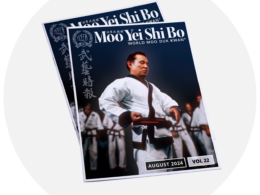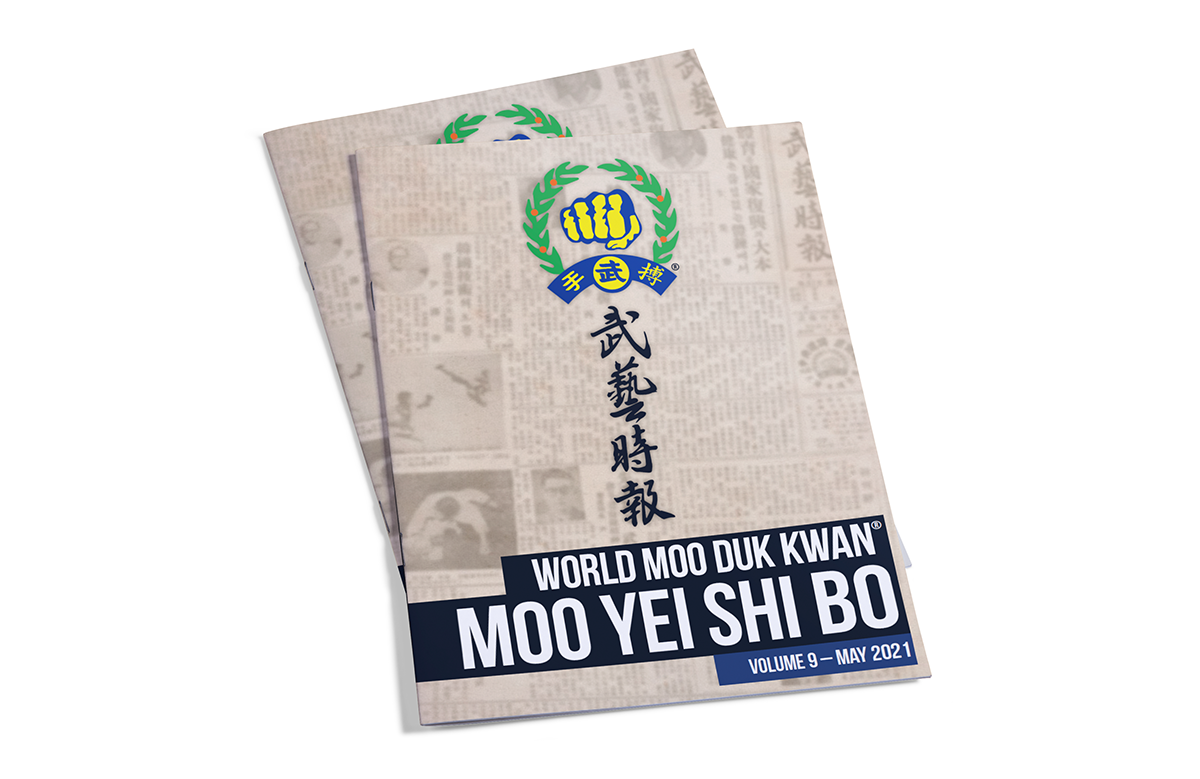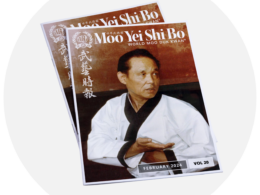Hwang Kee Chang Shi Ja emphasized that a martial artist should be both a warrior and scholar.
As a warrior he trained rigorously and passed down his technical expertise to others. As a scholar he deeply examined Moo Do history and philosophy which would later result in numerous publications.
Just four years after establishing the Moo Duk Kwan® he authored his first publication titled the “Hwa Soo Do Kyo Bon” in 1949. The “Hwa Soo Do Kyo Bon” was the first modern martial arts text published in Korea. The 200 page work introduced Moo Do philosophical principles as well as detailed descriptions of techniques and standardized Hyung. Its publication was noticed by the other schools at the time and further helped distinguish the Moo Duk Kwan®. Hwang Kee Chang Shi Ja believed that the publication of a Moo Duk Kwan® text would help preserve the art and enable the Moo Duk Kwan® to reach a larger audience. Additionally, texts could be used for reference and help improve standardization. The “Hwa Soo Do Kyo Bon” was very well received and would be the first in a long line of scholarly Moo Duk Kwan® publications by Hwang Kee Chang Shi Ja. In 1958 he published the “Tang Soo Do Kyo Bon” and then the “Tang Soo Do Bo Shin Beop”, a self-defense manual, in 1960.
As a true warrior scholar Hwang Kee Chang Shi Ja continually tried to push himself academically and further the growth of the Moo Duk Kwan®. In 1959 he began work on one of his greatest literary achievements; the “Soo Bahk Do Dae Kahm”.This particular work would dive deeper into Moo Do history and philosophy than previous works and also expand on explanations of individual techniques and traditional Hyung. Unfortunately the political situation at the time and the division of the Moo Duk Kwan® in 1965 greatly slowed progress and the book was not published until 1970.
H.C. Hwang Kwan Jang Nim followed the warrior-scholar example set forth by his father. He witnessed the publication of the “Hwa Soo Do Kyo Bon” as an elementary school student. Later, as a college student he wrote much of the text of the “Soo Bahk Do Dae Kahm” by hand as it was dictated to him aloud by his father. As the Moo Duk Kwan® expanded across the globe the translation of Korean texts became increasingly important to reach the growing membership. Much of the English texts are translations by H.C. Hwang Kwan Jang Nim of his father’s Korean texts. The first such text was the English version of the “Soo Bahk Do Dae Kahm” which would be known as “Tang Soo Do (Soo Bahk Do) Volume 1”. This work was published in 1978 and featured updated photographs taken by Frank Bonsignore Sa Bom Nim.
Bonsignore Sa Bom Nim would serve as the photographer for Moo Duk Kwan® technical publications from that point on.
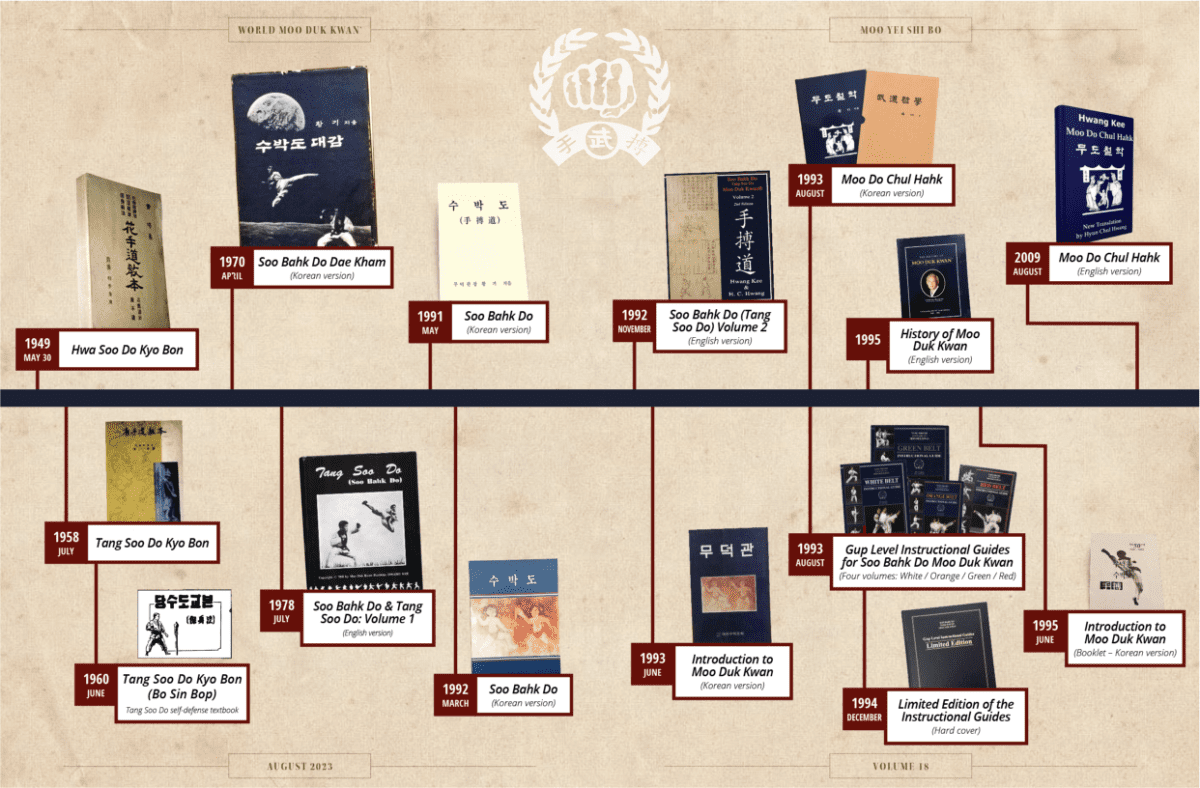
In his late 70’s Hwang Kee Chang Shi Ja would publish a series of significant works. In 1992 he released “Soo Bahk Do”, a 420 page detailed interpretation of content extracted from the “Moo Yei Do Bo Tong Ji”, the oldest record of Korean martial arts. He began his study of the “Moo Yei Do Bo Tong Ji” in 1957 and from that point on devoted much of his time to reviving the practice of the ancient Korean “Soo Bahk”. Shortly after he published “Moo Duk Kwan” (1993), a detailed account of Moo Duk Kwan® history. In the same year he released the “Moo Do Chul Hahk” (1993), a Moo Do philosophical masterpiece.
H.C. Hwang Kwan Jang would promulgate his father’s scholarly legacy through the translation and publication of English versions of these works. “Tang Soo Do (Soo Bahk Do) Volume 2” (1992) combined content from the Korean “Soo Bahk Do” text while adding updated technical information on advanced Tang Soo Do Hyung. At this time H.C. Hwang Kwan Jang Nim also authored the English text in the Gup Level Instruction Guides (1993). He co-authored “The History of the Moo Duk Kwan” (1995), an English account of the original “Moo Duk Kwan” (1993). Most recently, he published the long awaited translation of the “Moo Do Chul Hahk” philosophical text (2009). This work was translated into Spanish by Lorena Cortés Kyo Sa Nim and revised by Ramiro Guzman Sa Bom Nim of the World Moo Duk Kwan® Technical Advisory Committee.
The “Moo Yei Shi Bo” newsletter strives to carry on the scholarly legacy of Hwang Kee Chang Shi Ja and H.C. Hwang Kwan Jang Nim.
Jared Rosenthal, Sa Bom | UNITED STATES

